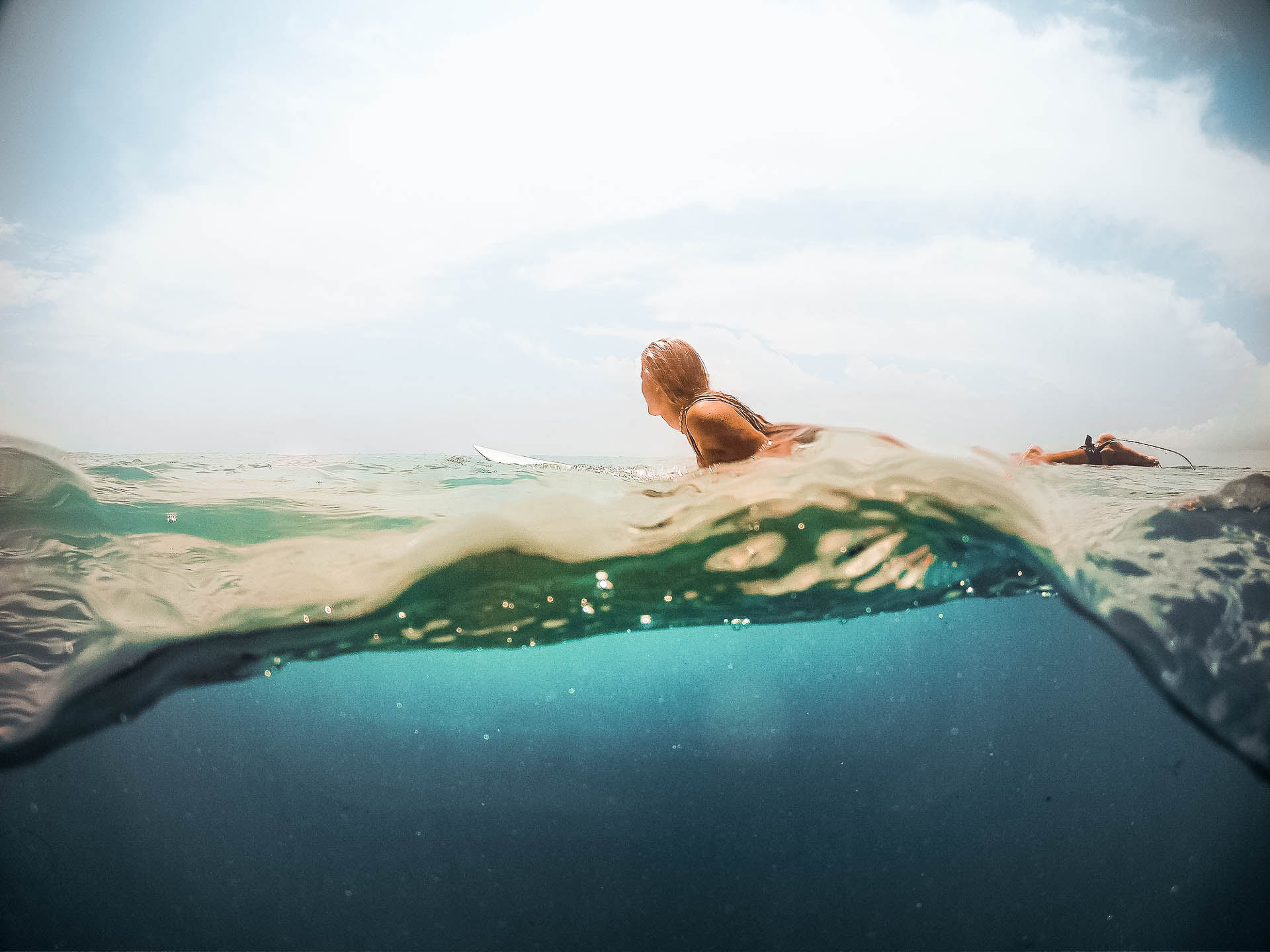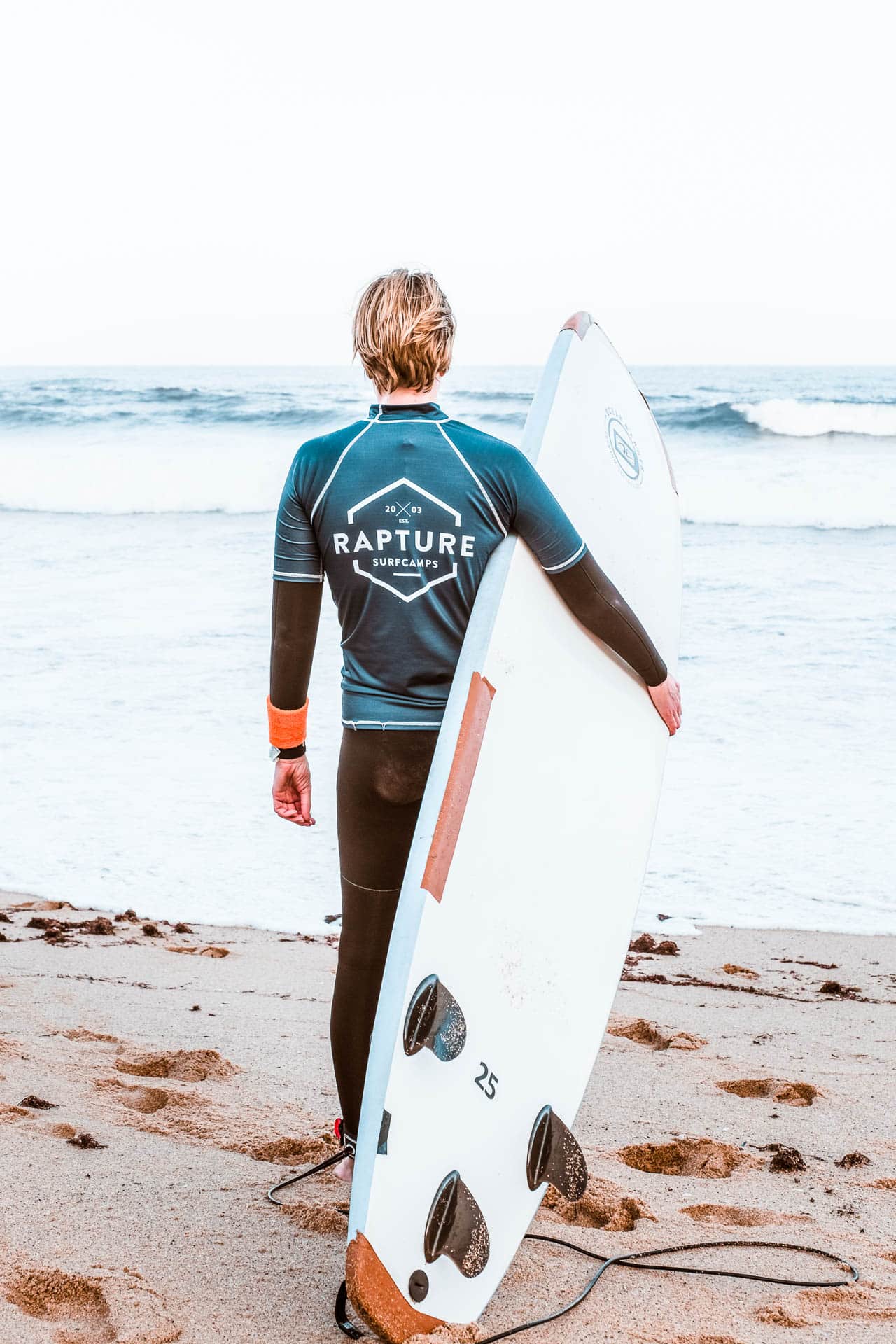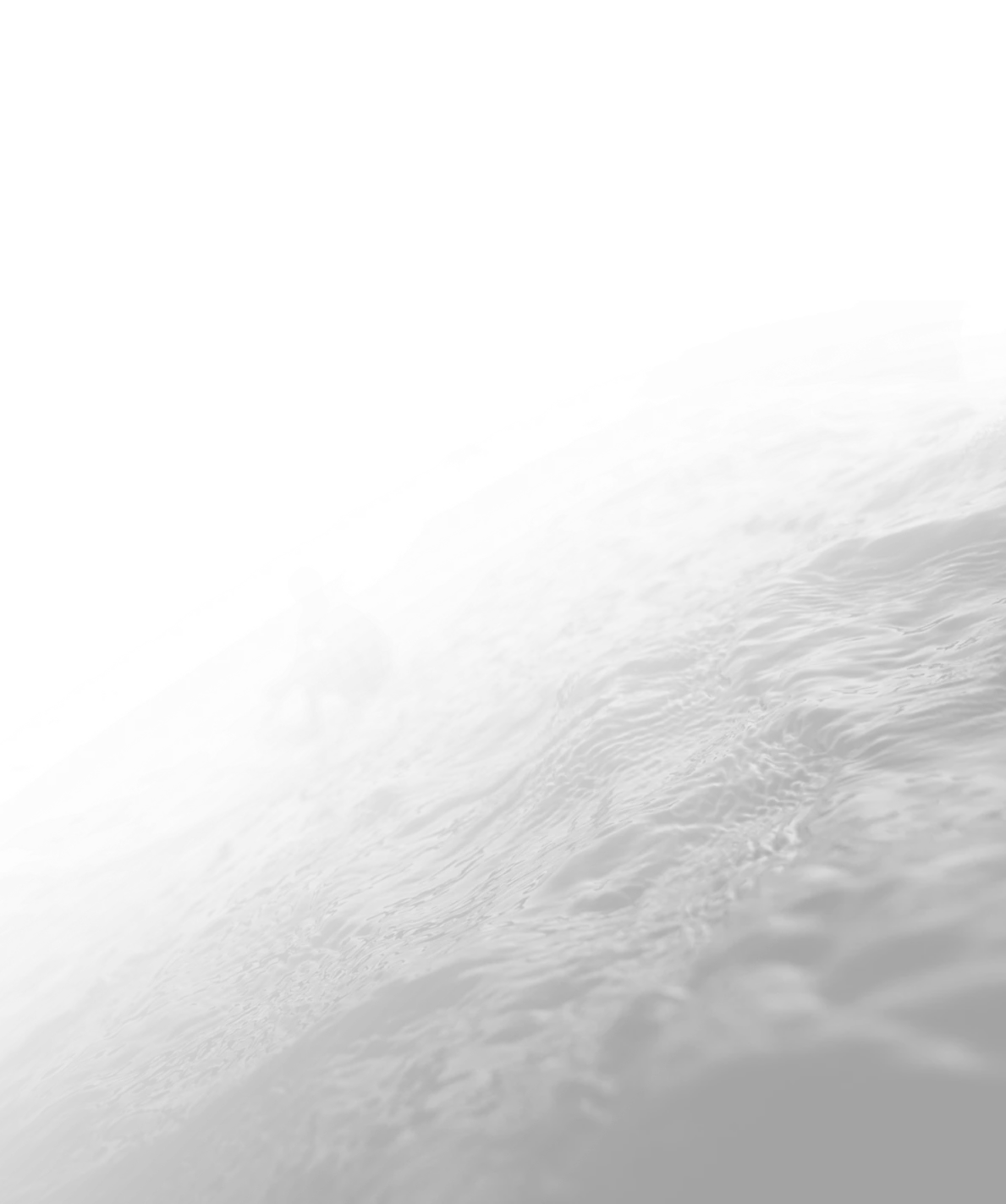If you’re new to the world of surfing, fear not! This section will provide you with essential tips and guidance to get started on your surfing journey.
First and foremost, it’s crucial for beginner surfers to choose a beach that is suitable for their skill level. Opt for beaches known as “beginner spots” or “beaches for beginners” that offer gentle, unbroken waves. This will provide you with a safe environment to practice and improve your skills.
When it comes to equipment, using the right surfboard is key. Beginners should opt for a large and wide beginner surfboard. This type of board offers more stability and buoyancy, making it easier to catch and ride waves. Additionally, always wear a surf leash. This is a safety device that attaches your surfboard to your ankle, preventing it from drifting away if you fall off.
Furthermore, it’s important to never surf alone, especially as a beginner. Surfing with experienced surfer friends or enrolling in a surf school can provide you with valuable guidance and support during your learning process.
By following these essential tips, beginner surfers can start their surfing journey with confidence and safety. Remember to choose the right beach, use a suitable surfboard, always wear a leash, and surf with experienced friends or attend a surf school. Now, grab your board and catch some waves!
By now, after reading you must have realized that as awesome as surfing is, it’s also hard work. But don’t worry! We’ve compiled helpful some more surf tips for you to make surfing a little easier for you.
Here are 9 fundamentals that everyone should know when they begin learning to surf:
1. Knowledge of the Ocean
Looking at the ocean can be deceiving. Knowing what to look for may save you from danger, injuries and death. Watch the ocean for a few minutes before you paddle out is always an advisable approach to ensure a safe and fun surf. Never underestimate Mother Nature!
2. Currents – Rips – Undertows
Are caused by water expelling out to sea, direction of wind and swell. Rips are seen with darker colouration from sand being turned up and chop on top of the water from smaller waves breaking. Do not paddle straight against a rip, take an angled approach, or put your hand up for help!
3. Swell Wave Size
Swell is formed by low-pressure storms out to sea. The lower the pressure, the bigger the waves. Always stay within your limits! The bigger the waves, the more experience you need to have.
4. Tide Times
Most tides work on a 6-hour change, some work on 12-hour change. High tide has more water making the waves spill down the face. Low tide has less water, making the waves shallower, plunge and barrel.
5. Wind Direction
You determine the direction from were the wind is coming from. If the wind is blowing from the south, they call it a Southerly Wind. If the wind is blowing from the west, they call it a Westerly Wind. Sometimes it blows from the northeast, they call it a Northeasterly.
6. Dangers to you and others
All sports can be dangerous, always take care, and be aware of conditions and situations at hand. Do not go out in surf above your ability, avoid rips and always surf with someone. You should watch where the waves are breaking and choose markers on the beach to assist you with positioning.
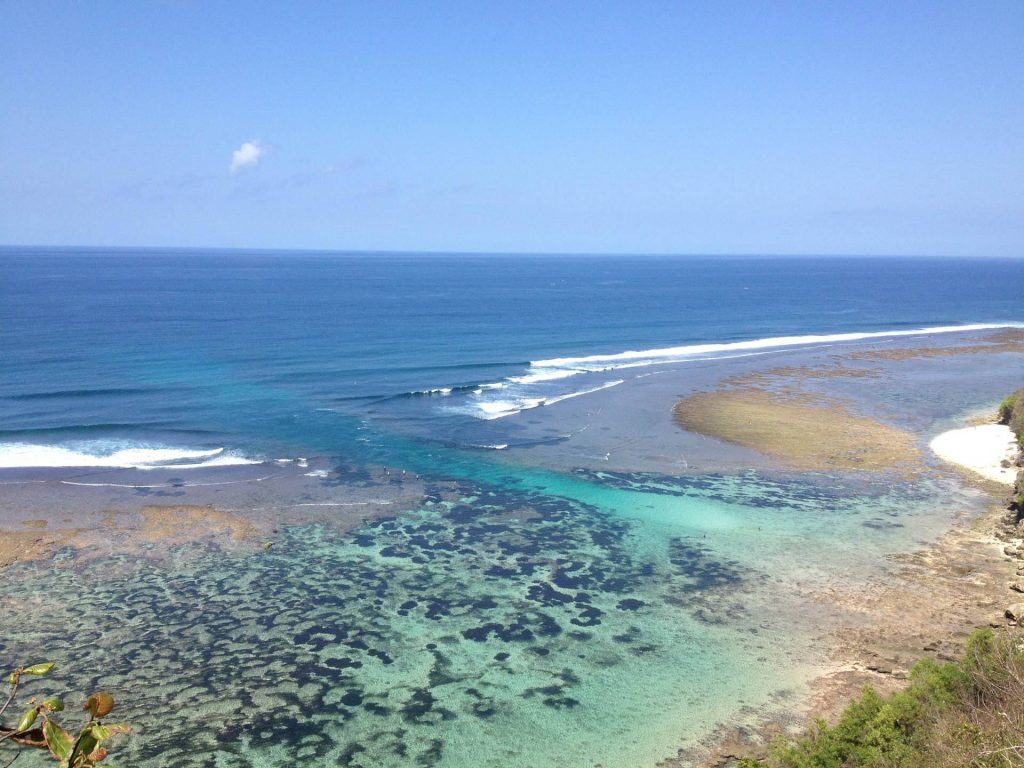
7. Surf Etiquette
Surfer on the inside has right of way. Be patient and respect the ocean, land, Mother Nature, and the locals. Surfing is enjoyable, so be respectful and have fun! Remember – “The best surfer out there is the one having the most fun.”
8. Surf Breaks – Reef, Sand and Point
Waves have different formations when it comes to certain breaks. Reef breaking waves are shallow and dangerous; they create a plunging wave that breaks from top to bottom called a barrel. This should be left to experienced surfers. Sand breaking waves are easier for the beginner surfer. They make various shaped waves and are normally not so crowded. Point breaking waves wrap around a headland, creating long winding waves, that can be easier to paddle out to.
9. Choosing a surf break
Try and find a spot with no crowds – battling with hundreds of other beginners and more experienced surfers is not the way to go. If you have a little space to yourself and a mellow wave it will be easier to learn.
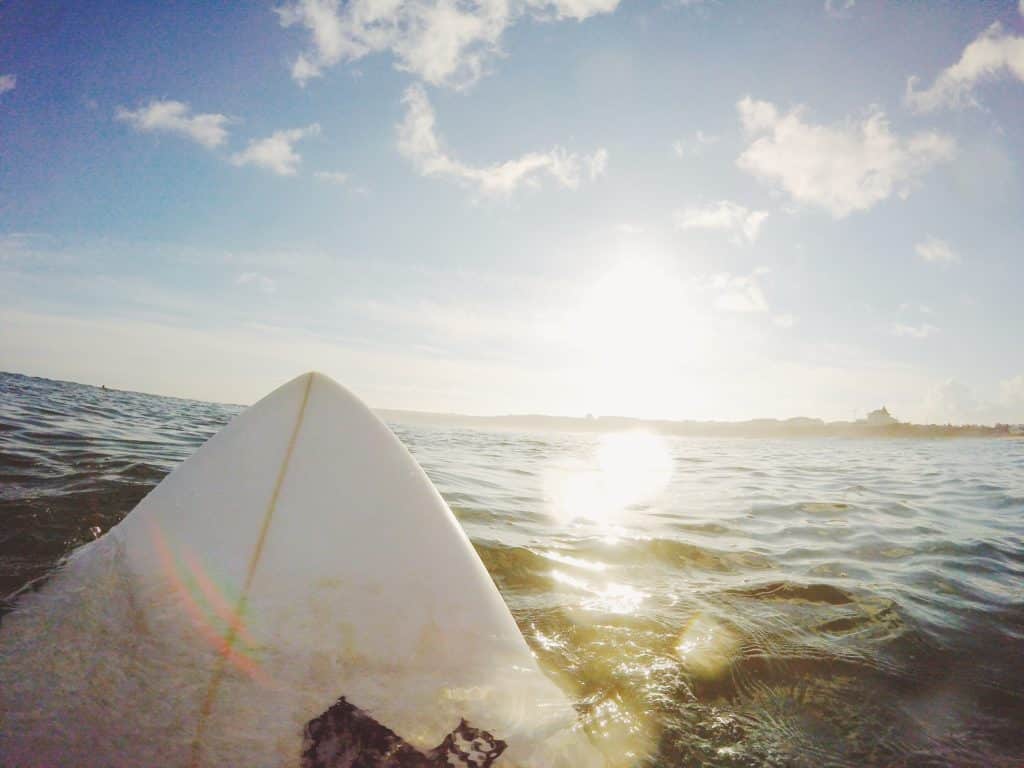
Important Techniques for Beginner Surfers
If you are a beginner surfer, there are some surf techniques you need to know to help you build your foundation in the sport and transition to the next level of surfing. Here are a few you can start with:
Master the paddle out
Paddling is an essential surfing skill so lots of practice at this will bring its rewards. Start in small waves and if possible paddle out when there is a lull in the waves. Its best to walk your board out until you are in waist deep water, then lay your body on the deck of your surfboard. On a shortboard keep your weight centred on the middle of the board and on a longboard position yourself so the nose is around 1 inch out of the water. The trick is to find the optimum trim position for the board which will provide least resistance when paddling. Once you feel the board gliding through the water with ease you’ll have found the ideal trim, so remember your position and stick with it.
Catch a few white-water waves first
Rather than paddling straight out the back into the line up, its best to catch a few broken whitewater waves in shallower water. You should have your ideal trim/paddling position at this stage, so point your board directly towards the beach and as the whitewater approaches paddle towards shore. The wave should pick you up and push you forward which is an unmistakable feeling, however if your board pearls or nosedives you have set off positioned too far forward on the board, likewise if the wave passes under you are positioned too far back on the board.
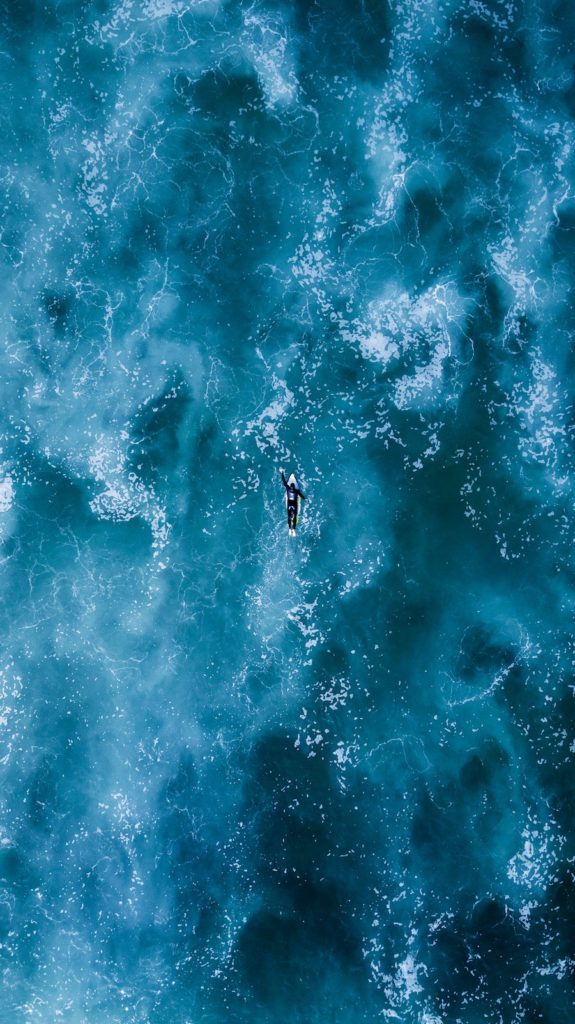
Once you’ve mastered paddling and popping up. It’s time to climb to the next level of wave riding. The real aim of any surfer is to angle along on the open face of an unbroken wave parallel with the beach, getting the longest possible ride with the greatest amount of speed. Your pop up will need to be much faster than in whitewater and so will have to be your paddling. Also, you should decide which direction (right or left) you will ride as you begin paddling for an oncoming wave.
Practice the “pop up”
Standing up on a surfboard can look very easy but once you place that surfboard on a moving, pitching, surge of swirling water where you must simultaneously leap from a prone position while weighting and unweighting left, right, front, and back just to keep from diving face forward, you’ll soon realize a lot of practice will be needed!The motion from prone to standing name: pop-up, which is basically a quick push up to your feet. Firstly you will need to know which foot will feel most natural to you in the forward position. The left foot forward is called “natural stance” and the right foot forward is a “goofy foot” stance. Lie the board on the sand (watch the fins) and do a push-up, once your arms are at full extension, pull both knees toward your stomach and hop to your feet. If you practice this regularly it will help you when in the water.
How to Pop Up
- Paddle for a wave and just as you feel the momentum of the surfboard flow faster than your paddling speed, you are ready to hop up.
- With your hands firmly grasping each rail push up quickly.
- Simultaneously, extend your arms completely and pull your knees quickly up to your chest. Be sure to keep your weight centred with just a little slant forward.
- Place your feet firmly on your board. One foot near the tail and one foot just above the midpoint of the board.
- Don’t stand up completely erect. Keep a low centre of gravity by crouching down and focusing your weight on the midpoint of the board. Keep your arms out, your eyes looking forward and balance.
Ready to catch your first wave? Join Rapture Surfcamps for an unforgettable beginner-friendly surfing experience. Embark on your surfing journey with expert instructors, beginner-friendly breaks, and a vibrant surf community. Whether it’s mastering the basics or advancing your skills, Rapture Surfcamps offers the perfect blend of instruction and camaraderie.
Why choose Rapture for beginners?
- Experienced Instructors: Learn from skilled surf coaches dedicated to nurturing your skills.
- Ideal Surf Spots: Discover beginner-friendly waves in stunning locations like Bali, Costa Rica, Nicaragua, and Portugal.
- Supportive Community: Immerse yourself in a welcoming atmosphere, connecting with fellow surf enthusiasts.
- Varied Accommodations: Choose from dorms or private rooms for a comfortable and laid-back stay.
Your surf adventure awaits! Book now and ride the waves with Rapture Surfcamps.
Book Your Surf Experience | Learn More
Hear What Rapture Surfcamps’ Guests Have To Say:
FAQs About Surfing For Beginners
Beginners should focus on fundamentals like proper paddling technique, mastering the “pop-up” to stand on the board, and understanding basic surf etiquette. These skills provide a solid foundation for a positive surfing experience.
Selecting the right surf spot is crucial for beginners. Opt for beaches with gentle, consistent waves, and sandy bottoms to ensure a safer learning environment. Avoid crowded areas to reduce the risk of collisions and enhance the learning experience.
While not mandatory, surf lessons significantly accelerate the learning process. Professional instructors can provide guidance on technique, safety, and wave dynamics, ensuring a safer and more enjoyable introduction to surfing.
Safety is paramount for beginners. Wearing a leash to keep the board attached, using proper sunscreen, and being aware of ocean conditions are essential. Additionally, beginners should learn to identify rip currents and understand how to navigate them.
Paddling efficiently helps beginners catch more waves, gain speed, and position themselves correctly. It’s a fundamental skill that contributes to overall surf progression.
Yes, beginners typically benefit from soft-top or foam boards. These boards provide stability, floatation, and forgiveness, making it easier for beginners to catch waves and maintain balance.
Improving balance involves regular practice and focusing on core strength exercises. Beginners can also benefit from practicing the “pop-up” motion on land to build muscle memory before hitting the waves.
Patience is key for beginners. Learning to surf takes time and persistence. It’s important to stay positive, celebrate small victories, and recognize that progress may come in waves.
Surf etiquette ensures a harmonious experience in the lineup. Beginners should learn the basics, such as not dropping in on other surfers, yielding to riders on the inside, and respecting the rotation in the line-up.
